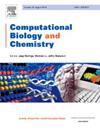通过人工智能筛选和分子动态模拟鉴定用于胰腺癌治疗的新型 TGFßR1 抑制剂。
IF 2.6
4区 生物学
Q2 BIOLOGY
引用次数: 0
摘要
胰腺癌的 5 年生存率低于 10%,是最致命的恶性肿瘤之一。TGF-ß 通路在这种疾病中起着至关重要的作用,因此成为治疗干预的关键靶点。针对 TGF-β 的临床试验面临着毒性和疗效有限的挑战,这凸显了对更强效小分子抑制剂的需求。我们选择 TGFßR1 作为抑制胰腺癌 TGF-ß 信号转导的药物靶点。我们采用了一种多方面的方法,首先利用人工智能驱动的筛选技术,从庞大的化合物库(包括 ZINC 和 ChEMBL 数据库)中快速识别出潜在的 TGFßR1 抑制剂。通过基于结构的高通量虚拟筛选(HTVS)进一步验证了人工智能筛选出的化合物,以评估它们与 TGFßR1 的结合亲和力。除此之外,HTVS 还使用了专门的抗癌化合物(65,000 个化合物)和蛋白激酶抑制剂(36,324 个化合物)库。随后,药代动力学分析将选择范围缩小到 40 个命中化合物。根据结合亲和力、非键相互作用、立体化学和药代动力学特征,选择了五个命中化合物进行分子动力学(MD)模拟。轨迹分析表明,TGFßR1 活性位点内的 HIS283、ASP351、LYS232、SER280、ILE211 和 LYS213 等残基通过氢键和疏水相互作用对配体的结合至关重要。研究人员采用主成分分析(PCA)和动态交叉相关矩阵(DCCM)分析来评估受体对命中化合物的动态响应。模拟数据显示,化合物 1、2、3、4 和 5 与 TGFßR1 形成了稳定的复合物。值得注意的是,MDS MM-GBSA 后分析表明,化合物 4 和 5 的结合能特别强,分别为 -81.0 kcal/mol 和 -85.5 kcal/mol。综合计算分析证实,化合物 4 和 5 是很有希望的 TGFßR1 靶点,具有开发胰腺癌新疗法的潜在治疗用途。本文章由计算机程序翻译,如有差异,请以英文原文为准。
AI screening and molecular dynamic simulation-driven identification of novel inhibitors of TGFßR1 for pancreatic cancer therapy
Pancreatic cancer, with a 5-year survival rate below 10 %, is one of the deadliest malignancies. The TGF-ß pathway plays a crucial role in this disease, making it a key target for therapeutic intervention. Clinical trials targeting TGF-β have faced challenges of toxicity and limited efficacy, highlighting the need for more potent small molecule inhibitors. We selected TGFßR1 as the drug target to inhibit TGF-ß signaling in pancreatic cancer. A multi-faceted approach was employed, commencing with AI-driven screening techniques to rapidly identify potential TGFßR1 inhibitors from vast compound libraries, including the ZINC and ChEMBL databases. AI-screened compounds were further validated through structure-based high-throughput virtual screening (HTVS) to evaluate their binding affinity to TGFßR1. In addition to this, a dedicated library of anticancer compounds (65,000 compounds) and protein kinase inhibitors (36,324 compounds) were also used for HTVS. Subsequently, pharmacokinetic profiling narrowed the selection to 40 hit compounds. Five hit compounds were chosen based on binding affinity, non-bonded interactions, stereochemistry, and pharmacokinetic profiles for molecular dynamics (MD) simulations. Trajectory analysis showed that residues HIS283, ASP351, LYS232, SER280, ILE211, and LYS213 within TGFßR1's active site are crucial for ligand binding through hydrogen bonds and hydrophobic interactions. Principal component analysis (PCA) and Dynamic cross-correlation matrix (DCCM) analysis were used to evaluate the receptor's dynamic response to the hit compounds. The simulation data revealed that compounds 1, 2, 3, 4, and 5 formed stable complexes with TGFßR1. Notably, post-MDS MM-GBSA analysis showed that compounds 4 and 5 exhibited exceptionally strong binding energies of −81.0 kcal/mol and −85.5 kcal/mol, respectively. The comprehensive computational analysis confirms compounds 4 and 5 as promising TGFßR1 hits with potential therapeutic applications in development of new treatments for pancreatic cancer.
求助全文
通过发布文献求助,成功后即可免费获取论文全文。
去求助
来源期刊

Computational Biology and Chemistry
生物-计算机:跨学科应用
CiteScore
6.10
自引率
3.20%
发文量
142
审稿时长
24 days
期刊介绍:
Computational Biology and Chemistry publishes original research papers and review articles in all areas of computational life sciences. High quality research contributions with a major computational component in the areas of nucleic acid and protein sequence research, molecular evolution, molecular genetics (functional genomics and proteomics), theory and practice of either biology-specific or chemical-biology-specific modeling, and structural biology of nucleic acids and proteins are particularly welcome. Exceptionally high quality research work in bioinformatics, systems biology, ecology, computational pharmacology, metabolism, biomedical engineering, epidemiology, and statistical genetics will also be considered.
Given their inherent uncertainty, protein modeling and molecular docking studies should be thoroughly validated. In the absence of experimental results for validation, the use of molecular dynamics simulations along with detailed free energy calculations, for example, should be used as complementary techniques to support the major conclusions. Submissions of premature modeling exercises without additional biological insights will not be considered.
Review articles will generally be commissioned by the editors and should not be submitted to the journal without explicit invitation. However prospective authors are welcome to send a brief (one to three pages) synopsis, which will be evaluated by the editors.
 求助内容:
求助内容: 应助结果提醒方式:
应助结果提醒方式:


